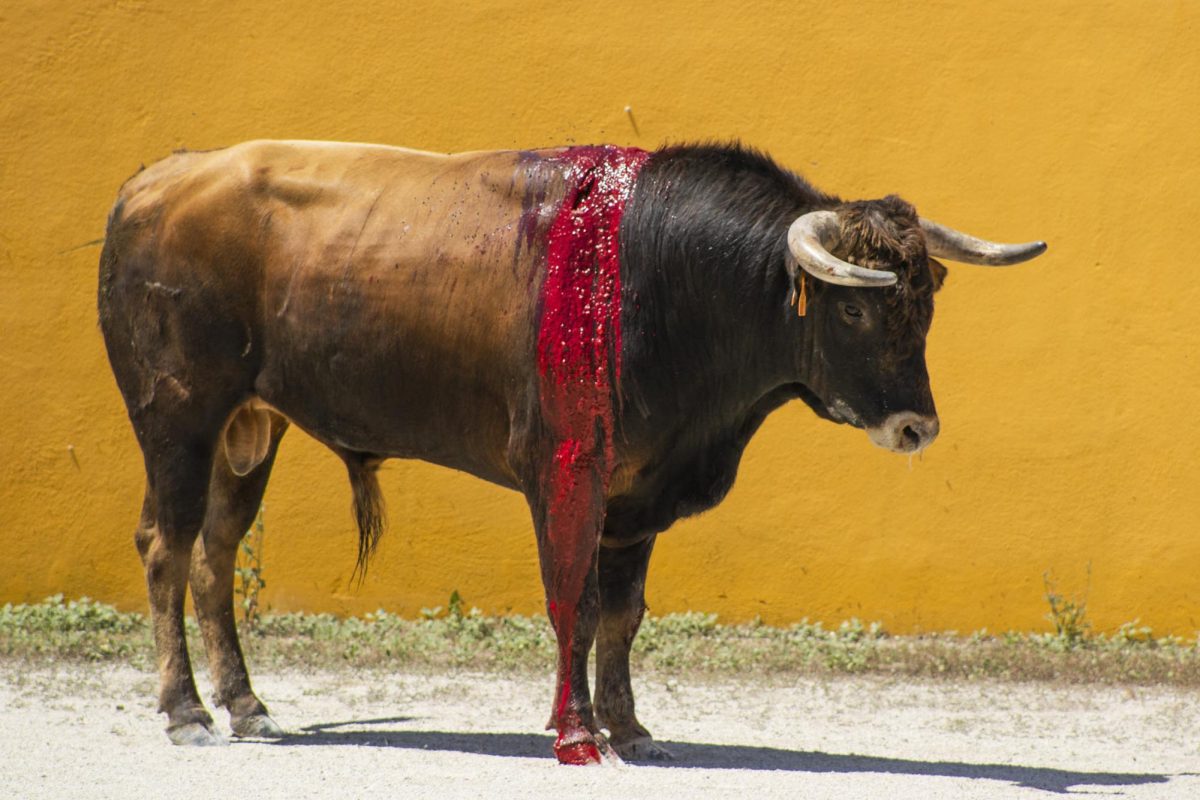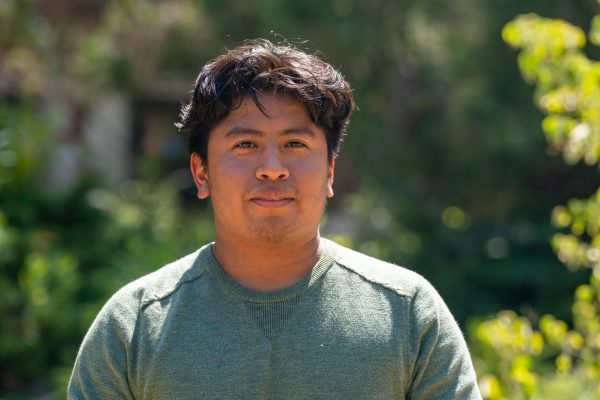I hold back tears, words or any kind of reaction, as my eye pressed against my camera’s viewfinder. Through it I saw a bull, a young calf, with a sword through its body. Blood spewed from its mouth; it panted short, heavy breaths. Its eyes darted back and forth, searching for a way to escape. Seconds later, the matador plunged a second sword through its head, ending the bull’s life, and pain.
This was at my first “Corrida” session, in the South of France. I was there for the summer for a journalism and photography multimedia program. “La Corrida” is something the people of Spain consider a tradition: the act of killing a bull, where a matador wears traditional garments and dances with a bull as spectators watch around a bullfighting ring. The performance ends in the death of the bull, one sword to the body and another to the head. To them it is an act of honor.
I had thought I was going to a practice Corrida session with my guide, Mary-Anne Devaux. She was a friend of the international program and helped students with interpreting French. She also had extensive knowledge of the Corrida.
When I arrived at the miniature bull ring, Devaux introduced me to several people, including the owner of the ranch and bull farm where the cows and all three of the matadors would perform that day. Everyone was incredibly charming and kind and asked me questions, like why I was there and what my multimedia program did.They really made me feel welcome and I was excited to shoot photographs of La Corrida. As they released the first bull, I felt the excitement of the crowd. There weren’t too many of us there, just a group of friends and family.
Lalo de Maria was the first matador, and at first I found him fascinating to watch. The most exposure I’d ever had to anything like a bullfight was the rodeo back in California, but this was very different. Lalo threw the cape in front of the bull, and it charged towards him. Then a man on a horse provoked the bull to run into him, to check the bravery and the timidness of the bull. It was at that moment when Devaux turned to me and said, “Oh, they’re gonna kill the bulls. You can tell because he has his sword in his hand.”
At that moment I had a conflict within me. I hadn’t attended the event to watch a bull die. However, I also knew that as a journalist, it wasn’t my job to decide what was right or wrong about this foreign custom. It wasn’t my responsibility to judge a tradition I didn’t understand. It was my responsibility to shoot photos of that dying bull. As the bull lay there, the crimson red drenching its body and mouth, I shot the pictures because it was the right thing to do at that moment.
On July 22, 1975, in Boston Massachusetts, 19-year-old Diana Bryant and her 2-year-old goddaughter stood on a fire escape during an apartment fire, as firefighters rushed to rescue them. As a firefighter reached out to help them onto a fire truck ladder, the fire escape broke and the two tumbled to the ground. Diana Bryant died from the fall, but also broke the fall of her goddaughter, who survived.
Boston Herald-American photographer Stanley Forman captured a series of heartbreaking photographs of the goddaughter and the young woman falling to the concrete. The photographs sparked outrage, particularly a large photograph the Herald featured on the front page, and the press was accused of invasion of privacy. However, they also sparked change. Due to pressure from fire safety groups, Boston and cities across the United States upgraded programs to inspect and repair fire escapes, preventing future tragedies.
I caught my first glimpse of the struggle to shoot harrowing experiences when I looked at the bull through my viewfinder, laying there, its life slowly leaving its body. I realized that whether or not I supported this Corrida, it was my job to photograph the dying bull and show it to the world. If I don’t agree with Corrida, it’s not enough to simply say it is.
Foreman wasn’t the only photographer to come under fire for distressing photographs. For instance, Kevin Carter was one of four photographers known as “The Bang Bang Club.” The four shot photographs in South Africa between 1990 and 1994, capturing civil unrest and poverty.
In 1993, Carter shot the iconic “The Vulture and the Little Girl” during a trip to Sudan to report on a famine hitting the country, which was controversial because of the methods and contents of the photo. Nothing captures the raw cruelty of the world more than this photo, where a looming vulture gazes at a little girl whose rib cage is visible, thinning arms, and was slumped over. The photo was published on March 26, 1993 for the New York Times.
At first viewing, many people were appalled, raising one main question: Why didn’t the photographer do anything to help the child? Carter was heavily criticized for taking the photo instead of chasing the vulture away, or helping the girl. However, this wasn’t a random girl in the middle of nowhere. The photo was taken outside of a United Nations feeding center, where the girl and her parents were waiting for food distribution from an airplane. The girl had stopped nearby to rest, and that’s when the vulture landed.
But the very act of taking a photograph is not easy. Carter had to approach slowly, focusing correctly, with all his camera settings in place, just to capture that one important moment in time. I know now how difficult it is not to feel exploitative or heartless in that moment. After the criticism and backlash, Carter suffered from depression and carried guilt about taking the photograph. In 1994, he won the Pulitzer Prize for shooting “The Vulture and the Little Girl.” That same year however, he died by suicide at age 33.
Carter did the right thing. As difficult as it may be, it is our responsibility as photojournalists to document everything. This photograph showed everyone who saw it the severity of what was happening in Sudan at the time. The photograph would be used to help bring eyes onto the issues of the famine. To help one person is one thing, but to bring awareness to the world is a much more difficult job.
Carter did scare the bird away immediately after taking the photo, and the girl returned to her parents. He wasn’t a heartless photographer looking to exploit a child for money. That’s important to know, even though it wasn’t publicized.
I’ve always heard the expression “for the greater good” in fiction, which translates to “making one hard decision to meet a greater end.” I never understood what that meant until I became a photojournalist. But that expression is my job now. It sounds arrogant, to assume I hold power over the issues I document, but at the very least as a photojournalist I have to try. If I shy away from shooting something because it’s difficult to look at, then I’ve failed. Yes, there will be times to shoot feel-good sports photos that show triumph and victory, but it’s my responsibility to show the other half, too.
It’s the job of all photojournalists to show the other half, too.




